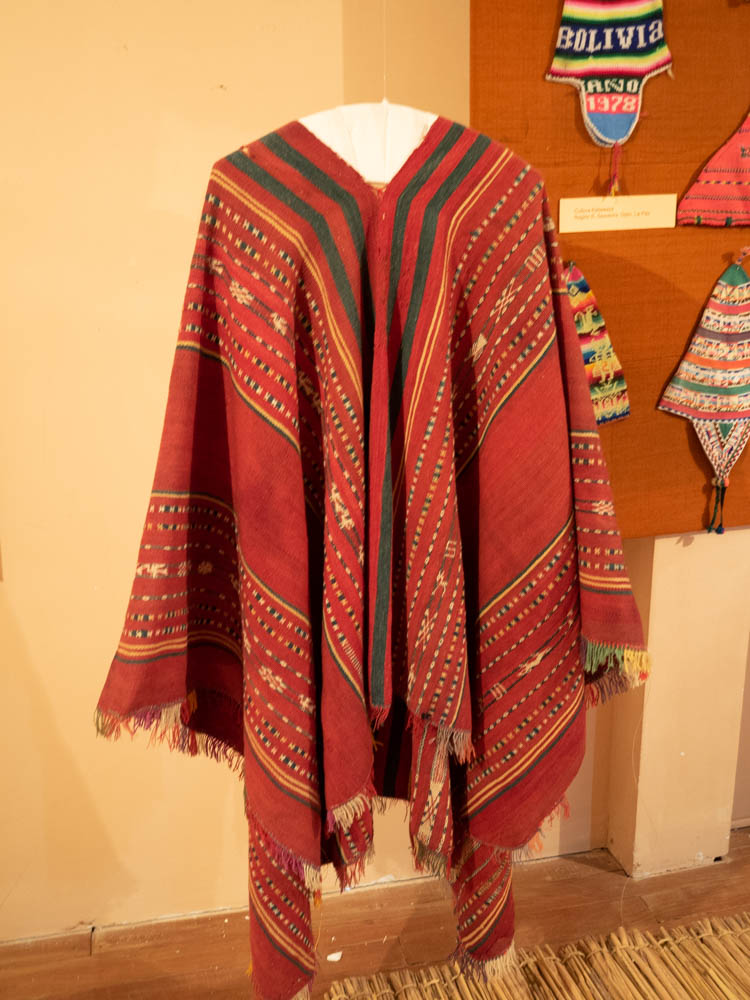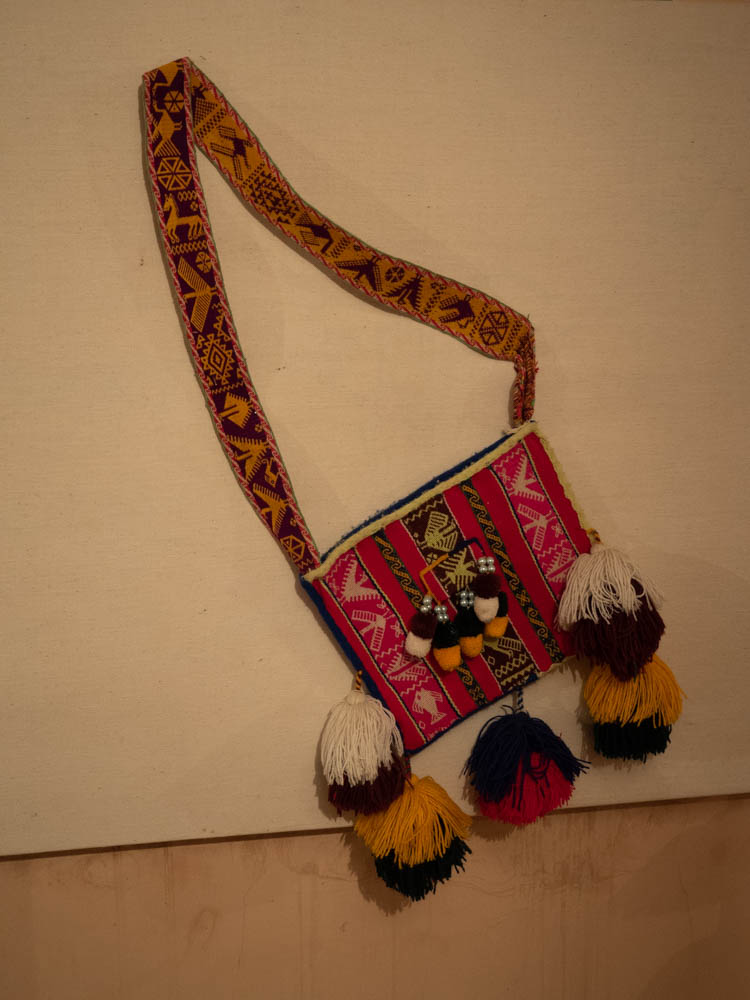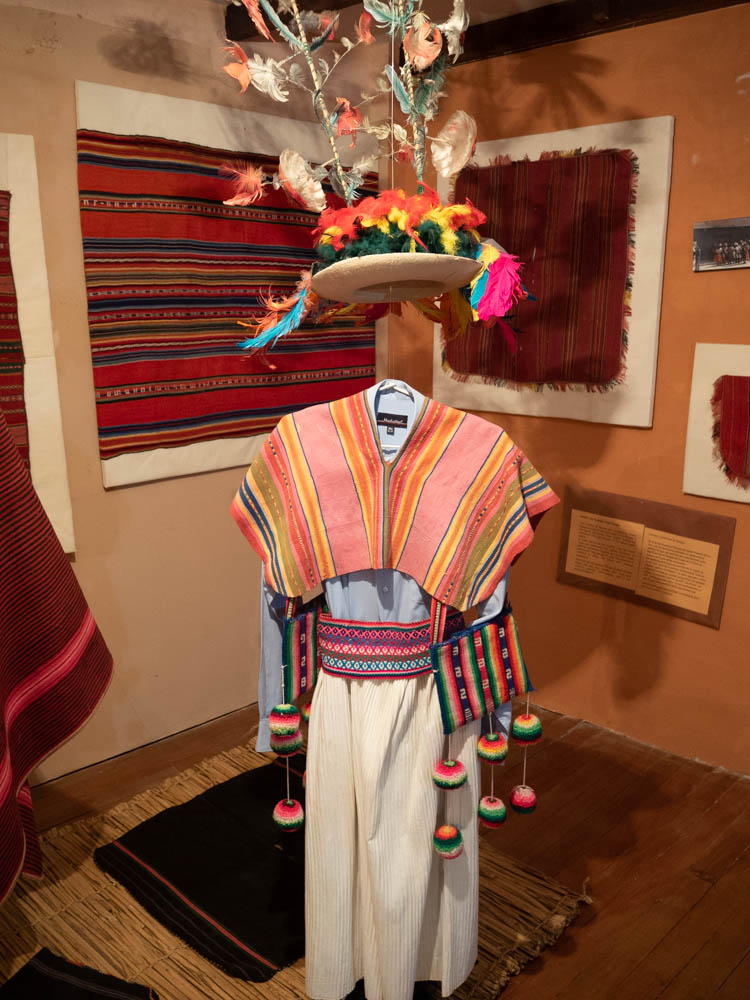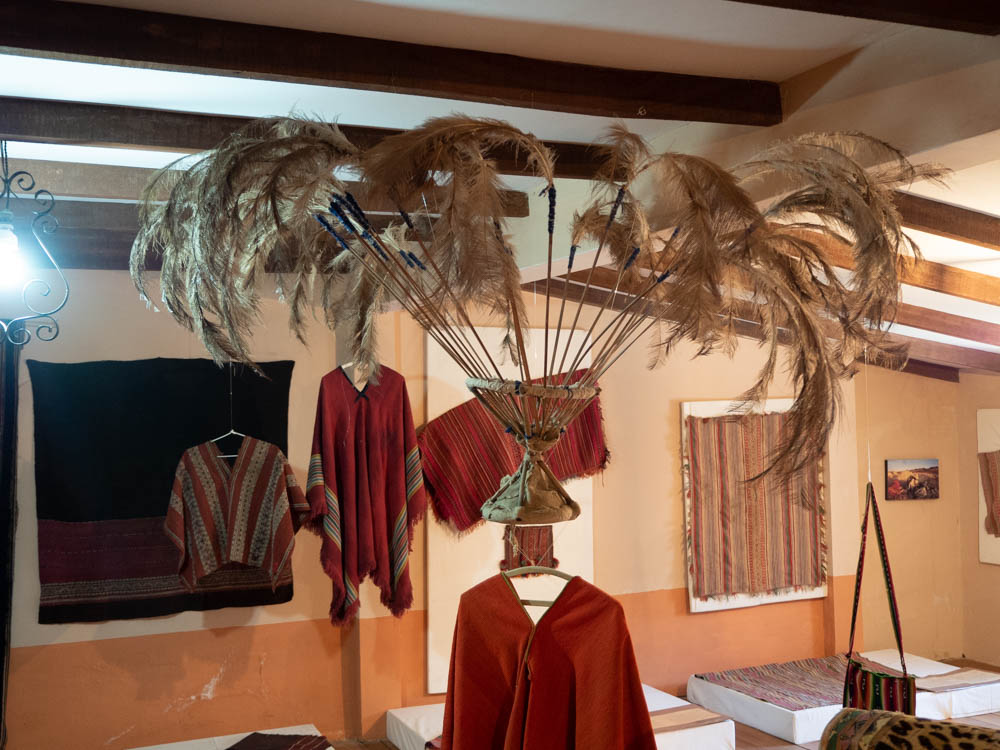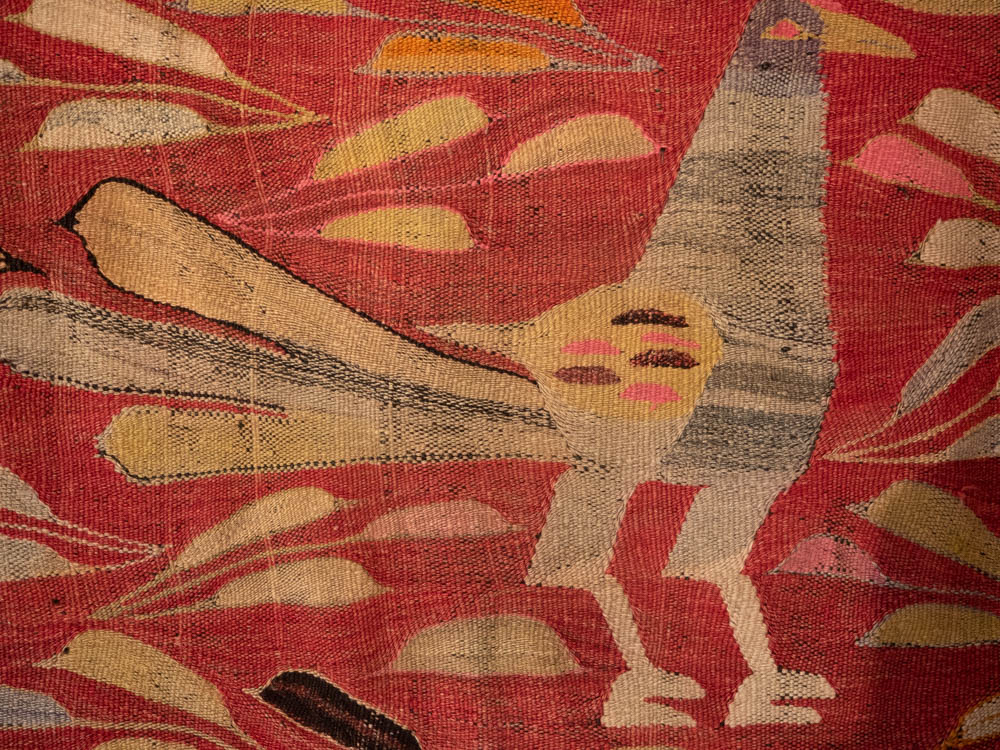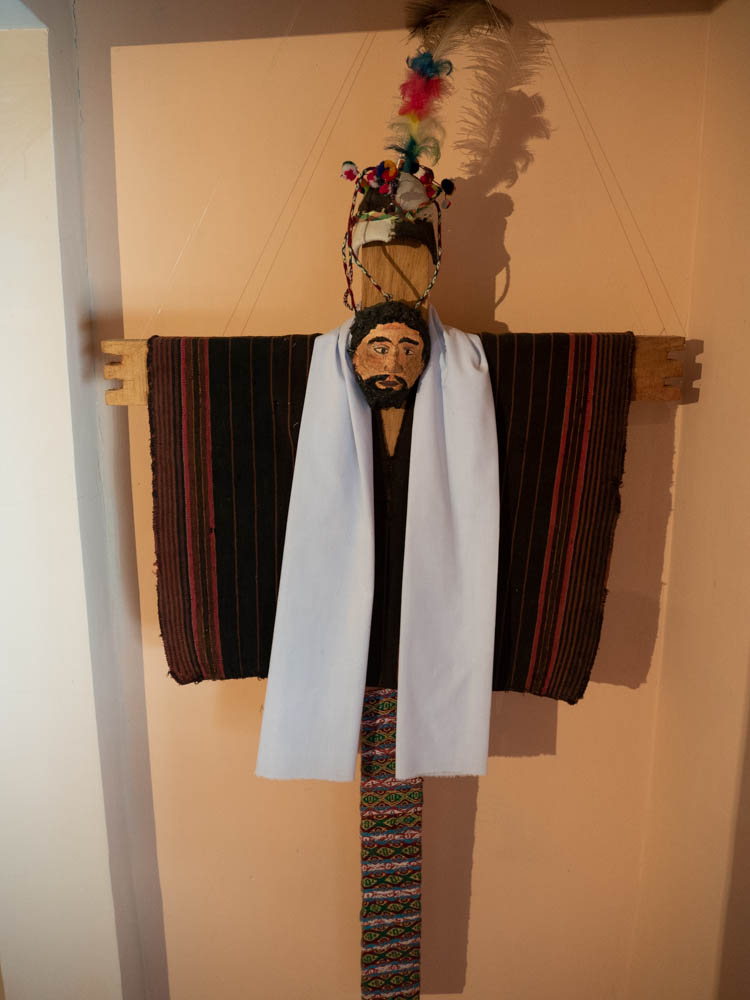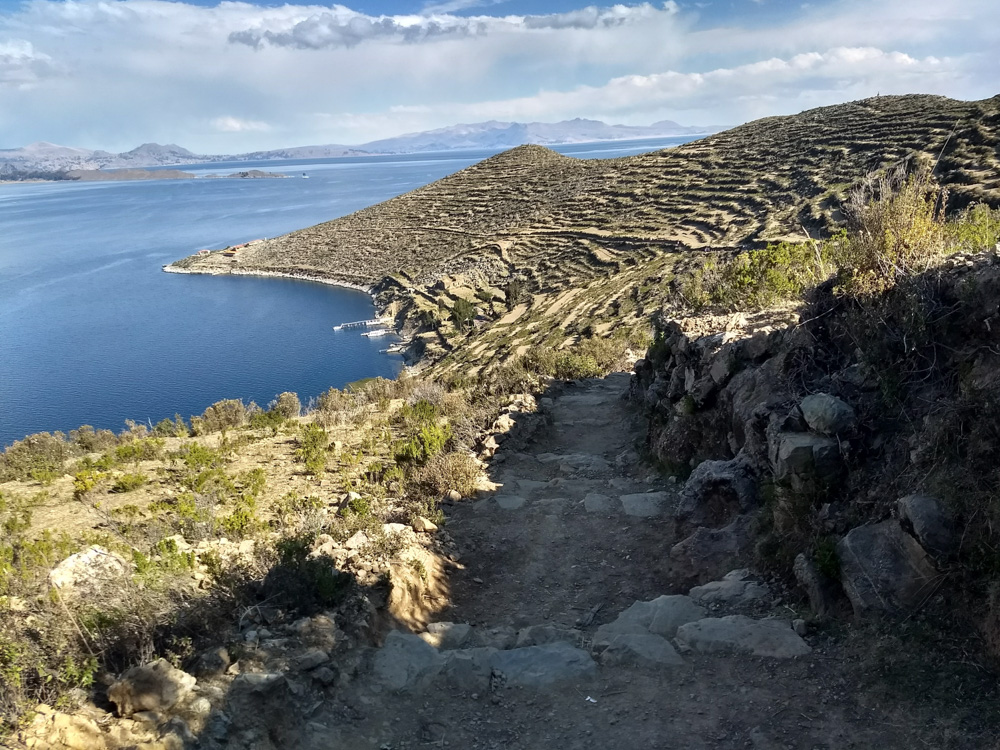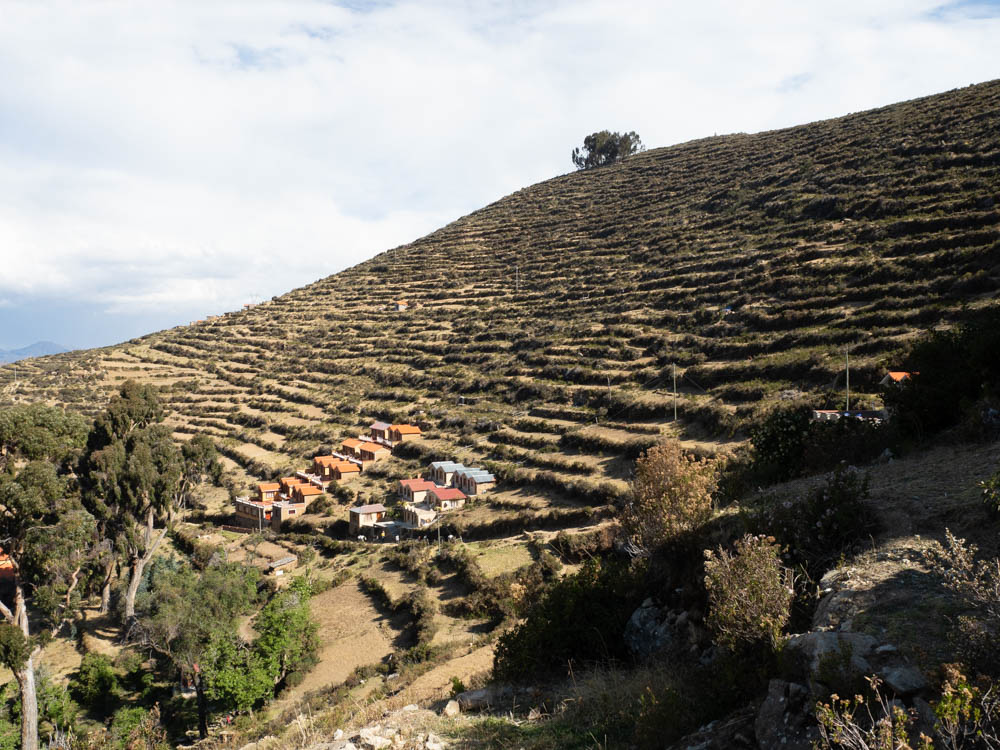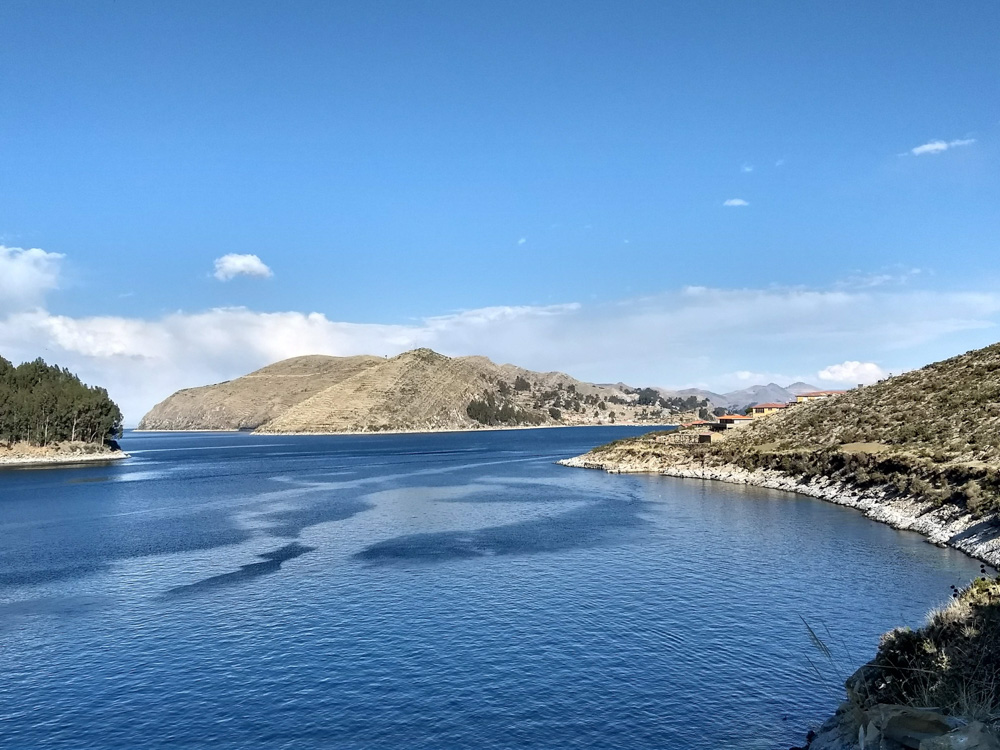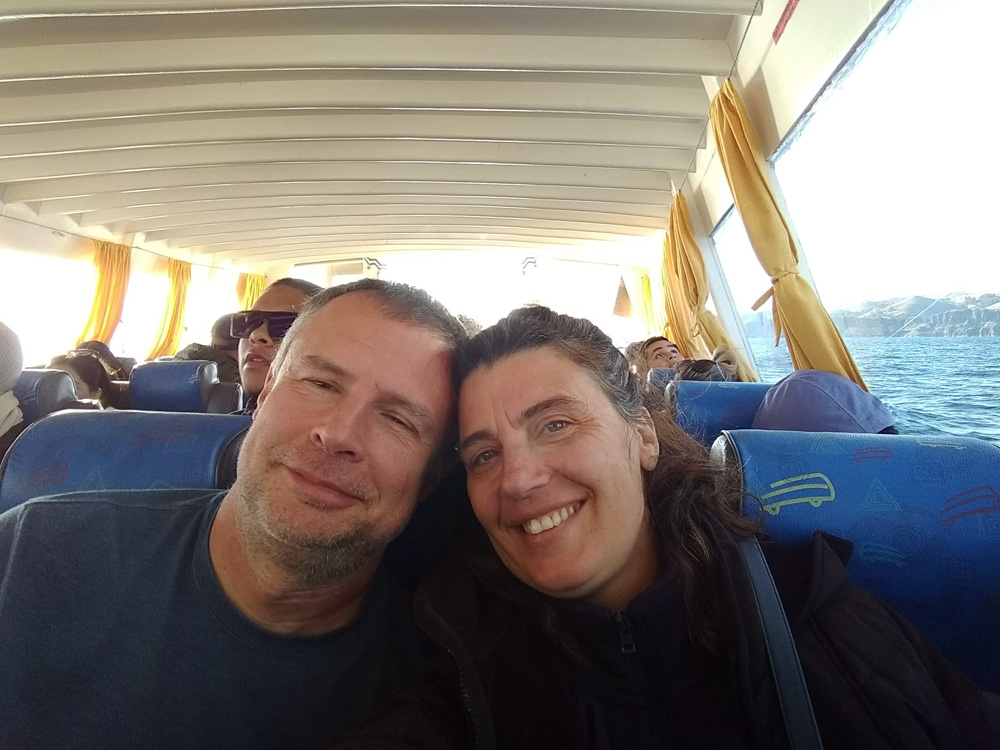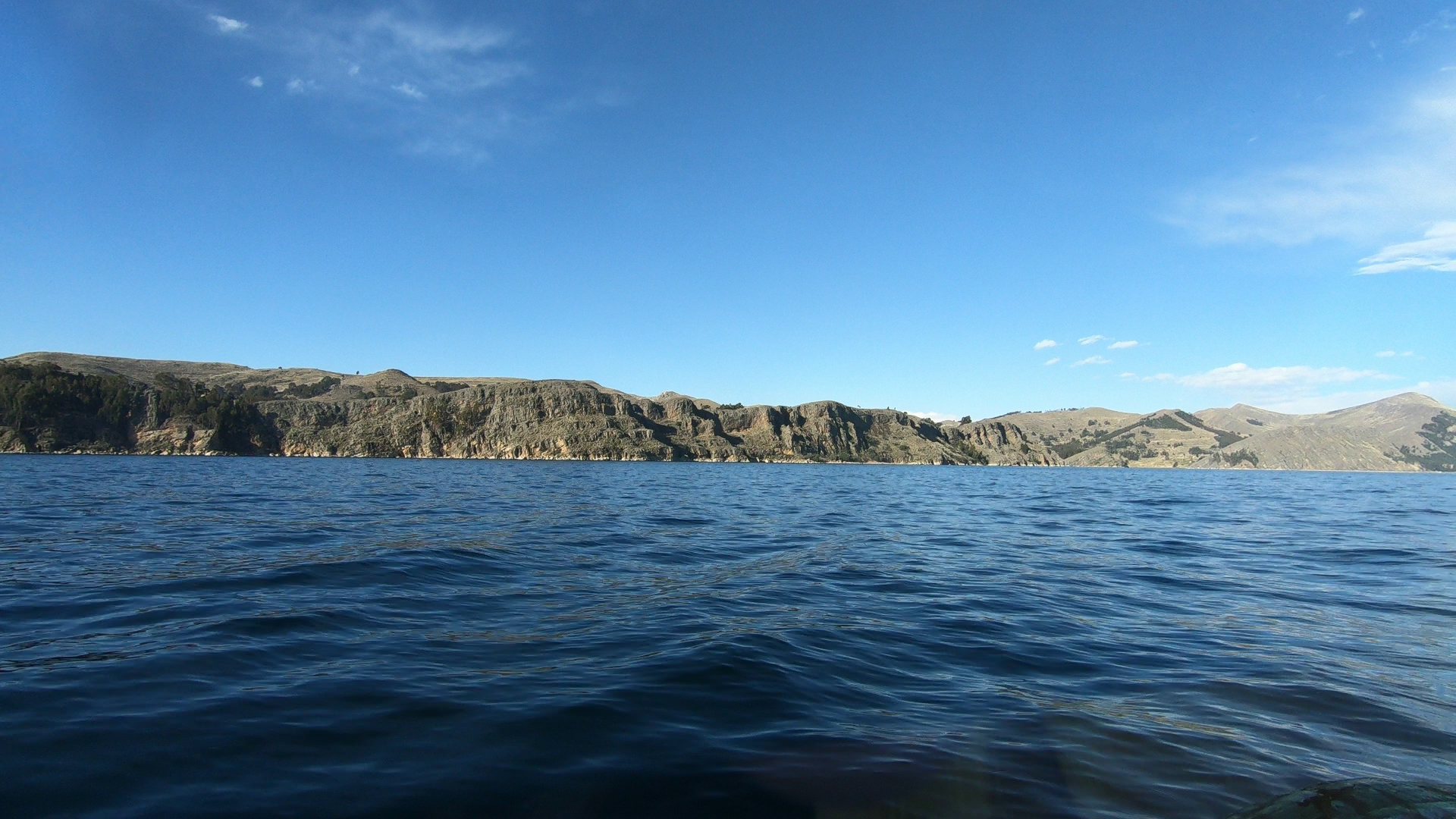Much like Peru, Bolivia is known for textiles and clothing made from llama and alpaca fleece. There is a museum in Copacabana dedicated to this craft called the Museo del Poncho. Each region of Bolivia has it’s own unique weaving patterns, symbols and techniques. An expert can easily tell where any given piece of weaving was created.
Because we hiked the day before, we decided today’s activity would be a boat ride to Isla del Sol (Island of the Sun). The Inca settled in this area because they believed their Sun God was born here and they left many ruins in the area.
As we chatted with some of the other passengers, it occurred to me Tracy and I were the oldest passengers on the boat. It was mostly 20-somethings with their massive backpacks who were planning to spend the night on the island. This was a very clear reminder I am not 20 years old anymore, as if I needed another reminder.
We only had 90 minutes on the island so we connected with a guided tour. We were warned to avoid the northern half of the island because there is a dispute between the indigenous groups on the island over tourism revenue, so tourists are not welcome on the northern half at this time.
The guided tour started with a hike to the top of the main hill on the island. So much for an easy day!! The ruins we saw were actually left over from pre-Inca cultures and were assimilated when the Icans took over the island. Given the short time we saw a very limited amount of ruins. Now I understand why everyone was staying the night.
After arriving back from Isla del Sol, we had dinner and spent a bit more time hanging out downtown.
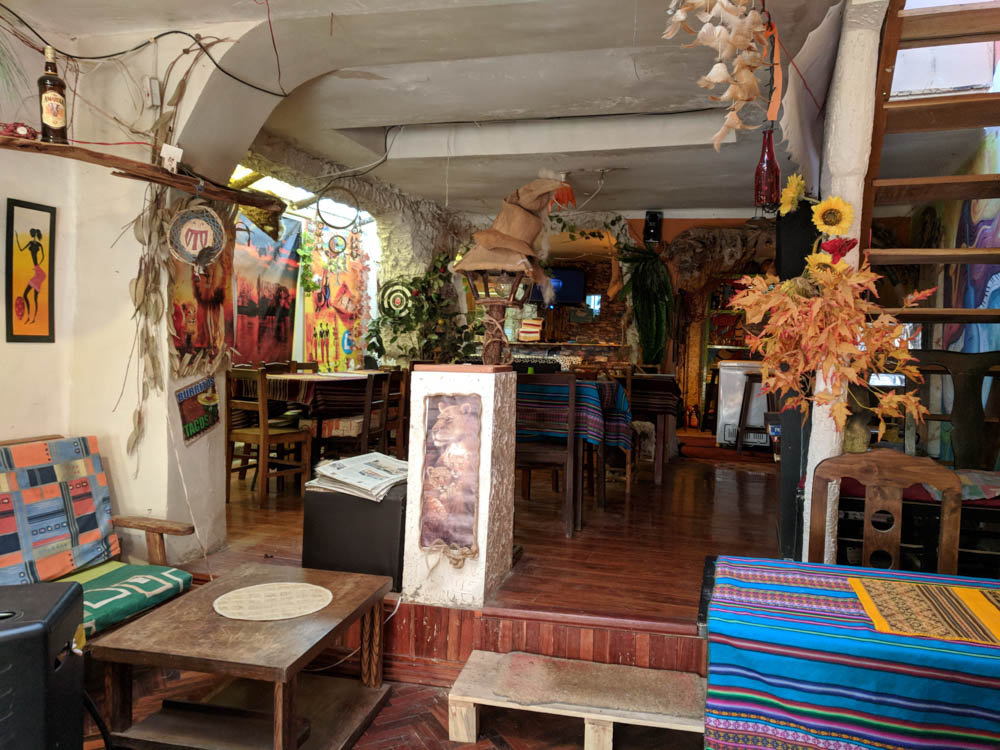
Tonight’s restaurant 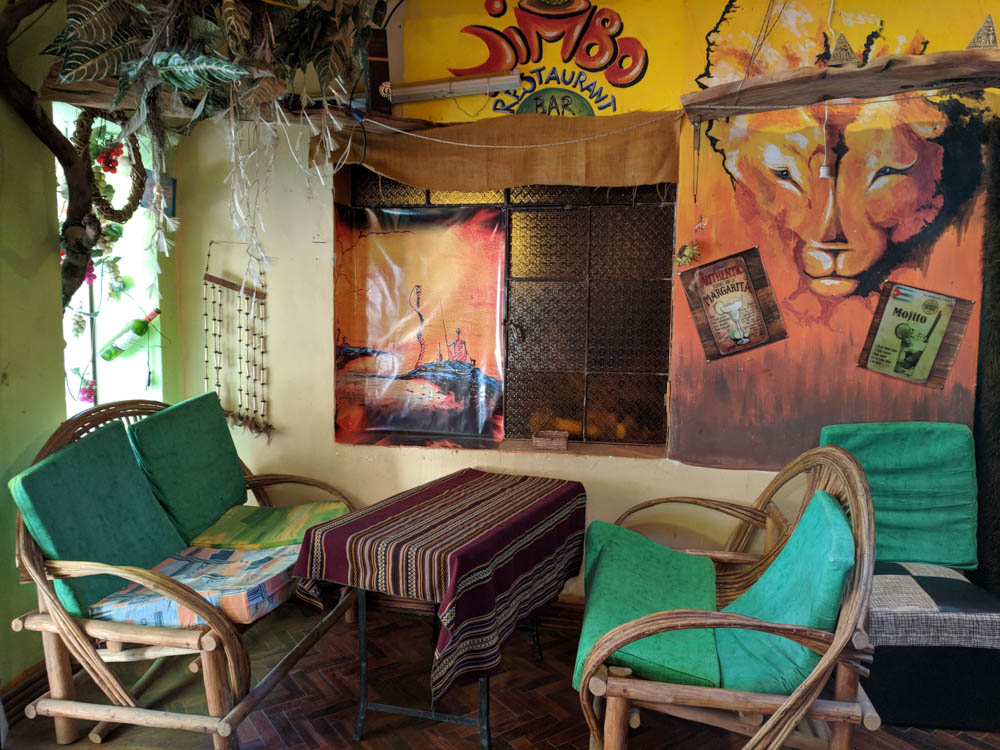
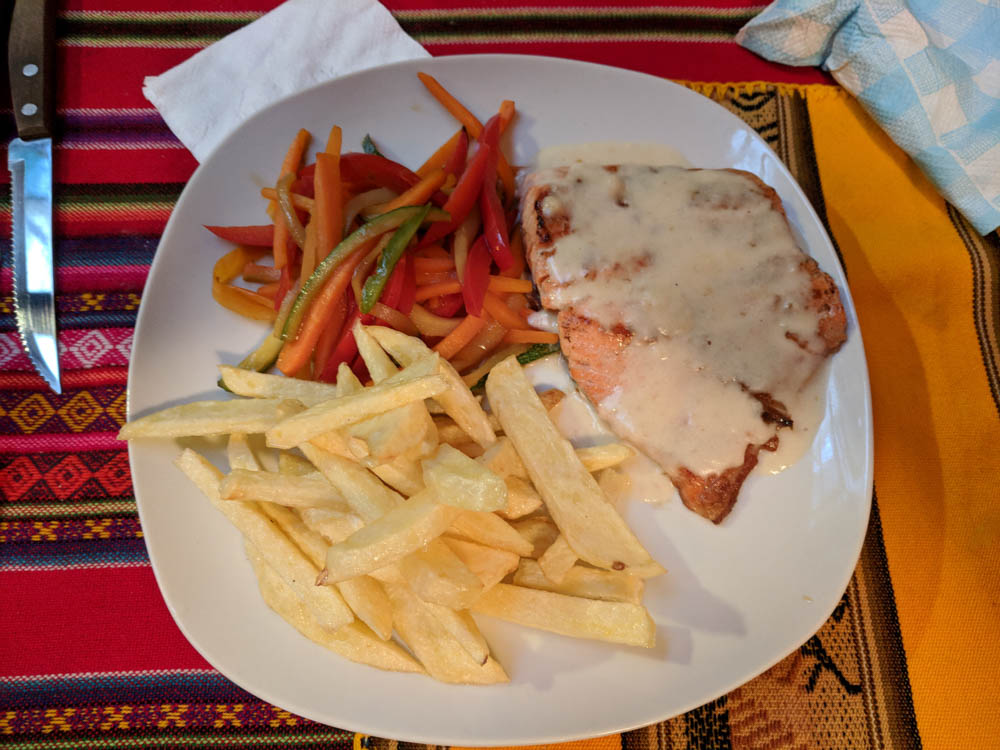
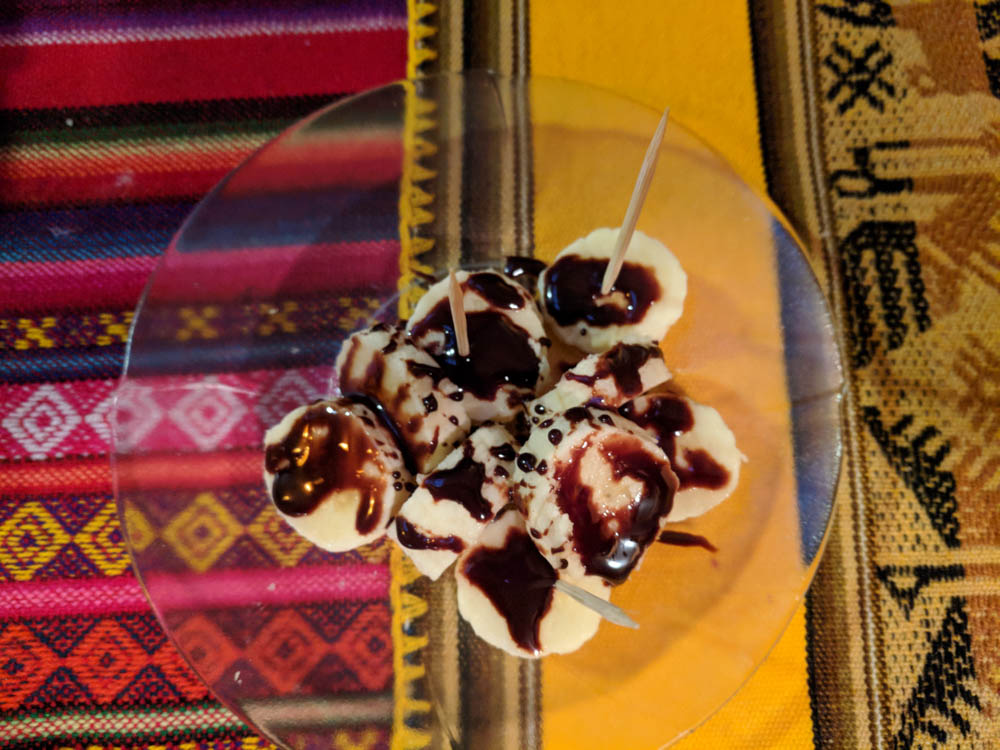
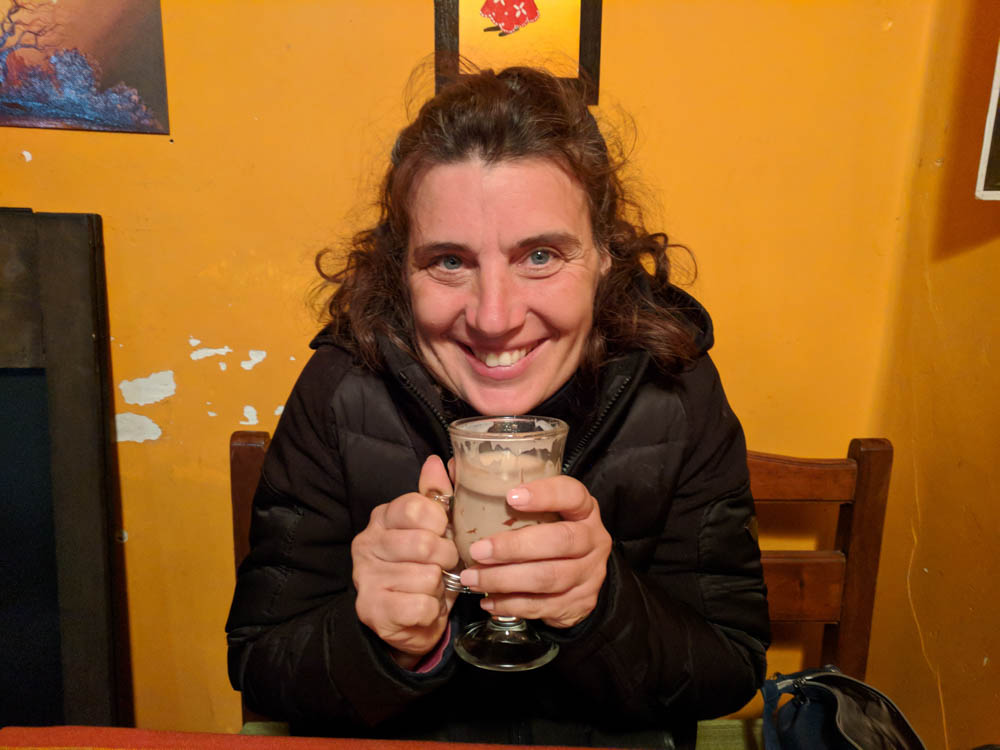
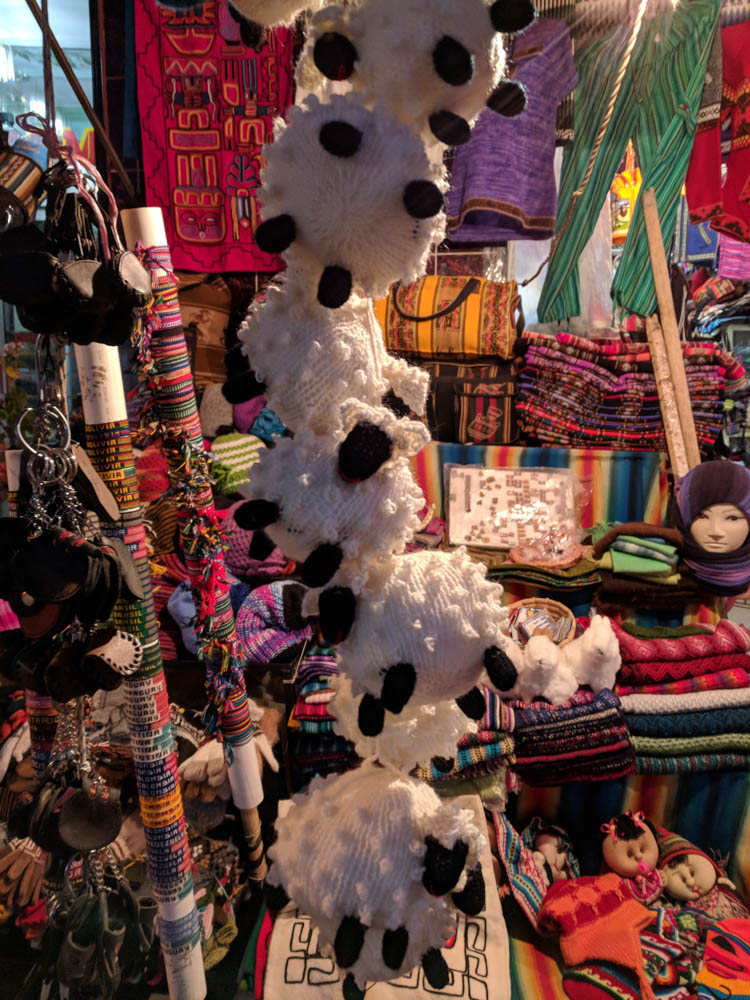
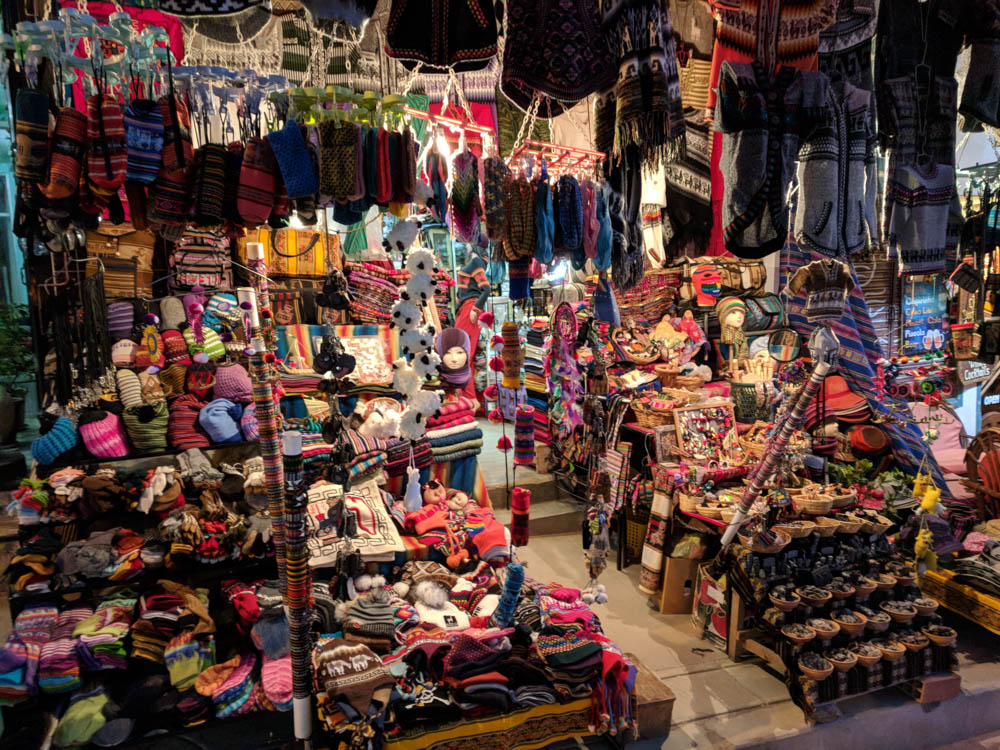
Always more shops
Even with the climb at Isle del Sol, this was a more relaxing day. The nights were very cold, but the days were comfortable enough the weather did not get in the way of any activities.
There were still some lingering effects from the altitude sickness, so we did what the natives do and drank some coca tea. Coca is a huge cash crop in the Andean region and is used as a cure for a number of aliments, including altitude sickness. It is also a stimulant used for less medically related reasons. There is conflicting information regarding the coca plants grown in these areas vs the plants typically used to make cocaine. Local growers will claim the leaves on the local coca plants are much smaller than the variety used to make cocaine and are not good for that purpose, but the online information I was able to find does not necessarily support that. As demand for cocaine increases throughout the world, coca production in Bolivia has also grown at a rapid rate. You do the math. Many people chew coca leaves for the stimulant effect, and it is also made into teas and candy. It is legal, available everywhere, and has been an important part of the culture for thousands of years.
Tomorrow, we move on.
Will

